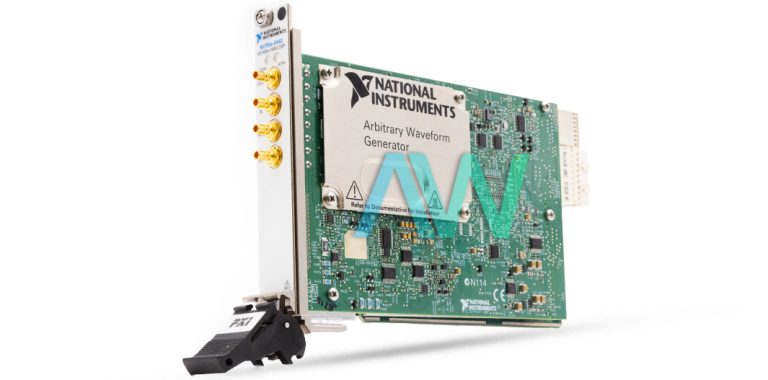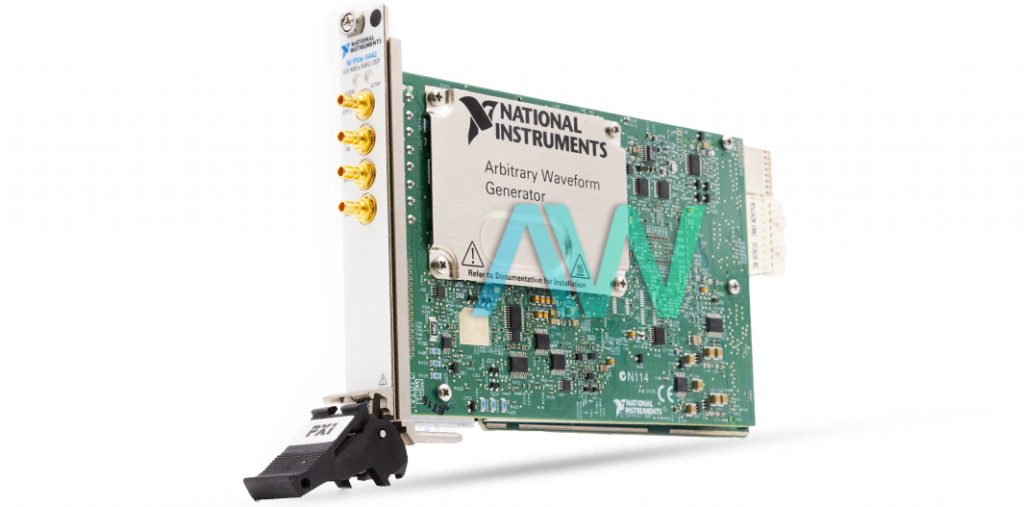Setup and Optimize the National Instruments PXI-5441 Waveform Generator
The National Instruments PXI-5441 is a powerful PXI waveform generator designed to support high-speed waveform downloads up...


PXI stands for PCI Extensions for Instrumentation. This technology builds upon the familiar PCI (Peripheral Component Interconnect) bus standard that’s a core part of many computers. In essence, PXI takes the proven technology of PCI and expands it specifically for the needs of test and measurement equipment. This creates a versatile platform for building customized measurement systems.
PXI is a commonly used modular electronic instrumentation platform for automation and measurement applications. PXI is an effective method for a variety of testing and measuring jobs in sectors like aerospace, defense, telecommunications, and automotive since it blends conventional PC technology with cutting-edge instrumentation capabilities.
PXI, or PCI eXtensions for Instrumentation, is an application that has evolved along with technological advancements. In this article, we will assess PXI’s definition, advantages, and various applications in different industries as well as its function in contemporary testing settings.
Shop National Instruments PXI Products here
PXI is made specifically for measurement and automation applications, combining the strength of Eurocard mechanical packaging with the electrical bus of the PCI.
Current industries require accuracy and reliability, and PXI offers a scalable and flexible solution that can meet the demands of complex test scenarios across a range of organizations. PXI has more integration, modularity, and flexibility than previous platforms, which makes it suitable for a variety of uses. Modules including oscilloscopes, digital I/O instruments, and signal generators are housed in chassis that make up PXI systems. To ensure synchronized functioning, these modules are regulated by external or embedded controllers.
The modular design and high-performance capabilities of PXI make it a go-to choice for various applications. In the realm of testing, PXI stands out in automated test equipment (ATE) for efficiently evaluating the functionality of electronics and devices. Similarly, PXI excels in data acquisition systems, where it seamlessly captures and analyzes vast amounts of data from sensors and experiments. Beyond testing, PXI even plays a role in industrial control systems, ensuring precise monitoring and operation of machinery within factories and production lines.
A PXI system consists of many essential parts that function as a unit to provide accurate, dependable, and high-performance measurements. It is supported by the chassis, which distributes power and provides cooling to keep each module running within its designated parameters and at ideal temperatures. In addition, the chassis provides the mechanical support required to lock each module into place and shield it from outside influences and mechanical strain.
The controller, which serves as the PXI system’s brain and oversees data flow and synchronization between the modules, is at its center. It processes information gathered from several modules, doing required calculations and analyses instantaneously. The controller makes sure that every module runs in unison, making it possible to precisely time and coordinate measurements. It also functions as a communication interface, allowing remote control and data transfer via Ethernet, USB, and GPIB protocols, among others.
The PXI system’s specialized instruments, or modules, are responsible for carrying out particular measurement and control functions. After being fitted into the chassis, they are linked to the controller. A variety of module types exist, such as function generators, RF and microwave modules, digital input/output modules, and analog input/output modules. These modules manage binary signals, create waveforms, convert analog to digital signals, and support high-frequency applications.
Upon turning on the PXI system, the controller initiates, establishing communication with every module, and the chassis supplies power to all of the modules. Through software, users set up the modules by entering measuring parameters and settings. After then, the modules gather data from linked devices or sensors; digital modules handle binary signals, and analog modules translate physical signals into digital data. The controller maintains accuracy and efficiency by processing and synchronizing the collected data. PXI systems are flexible and essential instruments in contemporary test and measurement environments because of this concerted effort, which guarantees that these systems provide accurate measurements in real-time.
So, what makes PXI such a valuable tool in test and measurement? Several key benefits contribute to its widespread adoption. Firstly, PXI boasts a modular design. Imagine a system where you can mix and match instruments and functionalities like building blocks. This allows you to create a customized measurement setup tailored to your specific needs. No more bulky, single-purpose equipment! Secondly, PXI delivers high-performance muscle. Thanks to its advanced architecture, PXI offers fast data transfer rates and precise timing synchronization. This ensures you can capture and analyze even the most rapid signals with exceptional accuracy. Finally, PXI thrives on industry-wide standards. This means PXI modules from different vendors can seamlessly work together within a single system. No more compatibility headaches – just a world of possibilities for building your ideal measurement solution.
Some organizations prefer legacy equipment due to the familiarity and reliability it offers. Over the years, these systems have proven to be dependable, and organizations have built their processes and workflows around them. Furthermore, legacy equipment may have been customized extensively to meet specific operational needs, making it deeply integrated into the organization’s infrastructure. The cost and effort required to replace or upgrade such tailored systems can be significant, making organizations hesitant to transition to newer technologies.
Another reason that companies choose legacy test equipment is the financial consideration. The initial investment in legacy equipment is substantial, and many organizations aim to maximize the return on this investment by using the equipment for as long as possible. Additionally, the procurement of new systems like PXI can be expensive, not just in terms of purchasing new hardware but also considering potential downtime during the transition, the cost of training personnel, and the possible need for additional infrastructure changes. For industries where margins are tight, the financial risk associated with upgrading to newer equipment can outweigh the potential benefits, leading them to stick with their reliable legacy systems.
Apex Waves offers the largest inventory of calibrated and fully tested mature and obsolete NI modules. Browse our selection of National Instruments products here or contact us to get a quote!
A monthly email packed with valuable content—industry news, tutorials, obsolescence updates, and more. No sales pitches, just insights we think you'll find helpful!
The National Instruments PXI-5441 is a powerful PXI waveform generator designed to support high-speed waveform downloads up...
Companies in almost every industry are being transformed by artificial intelligence, and autonomous machines are...
The PXIe Platform from National Instruments offers an incredibly valuable toolset for test and measurement innovation. Its...
It is no secret that simulation and testing is an important part of designing circuits....